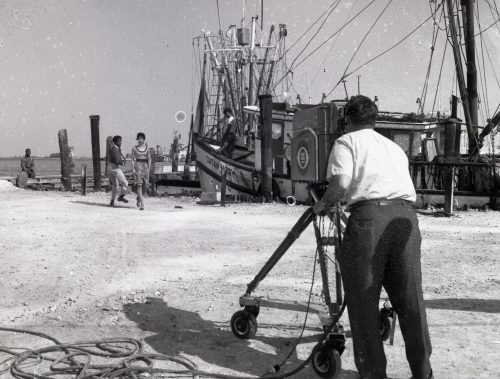When Alvin Ailey Danced At The Key West Bight

By Dr. Corey Malcom, Lead Historian, Florida Keys History Center
In late 1960, CBS Television began production of a special program “The Gershwin Years,” a musical tribute to George Gershwin. The program featured stars of song and stage performing selections from the composer’s rich catalogue. One segment was a dance performance set to “Catfish Row,” a musical suite from “Porgy and Bess,” featuring renowned dancers Carmen de Lavallade, Claude Thompson, Harold Pierson, and Alvin Ailey. [1]
Gershwin’s original setting for the opera was Charleston, South Carolina, but the CBS crews chose New York City’s Jamaica Bay as a substitute. The scene was successfully shot in November, but after that things did not go as planned.
When the team returned to the studio for post-production work, a technician accidentally erased half of the Catfish row sequence – a $10,000 mistake! [2] The weather in New York had since turned for the worse, and on top of that, Carmen de Lavallade, who portrayed Bess, had begun appearing nightly in an off-Broadway production and could not get away. A re-shoot seemed impossible. But “Gershwin Years” producer Leland Hayward solved the dilemma by buying all the seats in the theater and flying Lavallade and her colleagues to Key West, Florida, where the wharves fit the bill and the weather was good. [3]
Fortunately, CBS had a production crew already in Miami for a football game, so it was no great expense for them to travel down the road with the necessary equipment. On January 5, the “Gershwin Years” team headed south. [4] Production notes from the Catfish Row shoot at Key West are not found, but the footage survives and is available on the internet:
The sequence opens at the shrimp boat docks at the Key West Bight. There, the disabled Porgy (Thompson) hobbles down the wooden pier as Bess makes her way past him, fondly tousling his hair. She also sees her problematic boyfriend Crown (Ailey) working on a boat but does her best to ignore him. Bess then comes upon the drug dealing Sportin’ Life (Pierson), and he offers her a powder that sends her into dream. In her reverie, Bess dances joyously with all three of the other characters.[5] When Bess comes back to reality, it is clear she has had an epiphany. Once again on the Key West dock, where all three men are as they were, Bess shuns both Sportin’ Life and Crown and makes her way to Porgy to lovingly embrace him.
CBS’ 1961 Porgy and Bess Catfish Row sequence is just one small example of the many television features and movies to be created in the Florida Keys. All of them are interesting because with professionally filmed moving footage, even if not in a documentary style, they give us vibrant views of the Keys as they were found decades ago. In this case, we get an excellent piece of art set in a place we all know, but which has changed immensely from its days as a rough and tumble “working waterfront.” Another peek into the past!
[1] Adams, Val (1960). Hayward to take ‘Porgy’ Unit South, New York Times, December 30.
[2] Lowry, Cynthia (1961). The television Scene: She’s had Plenty of Pileups, Daytona Beach News Journal, January 3.
[3] In an interesting sidenote, Carmen de Lavallade was likely quite familiar with Key West. She was married to Geoffrey Holder, who was on the island in 1956 to film his first motion picture, Carib Gold. https://en.wikipedia.org/wiki/Carmen_de_Lavallade.
[4] Lowry, Cynthia (1961). Critics View: New Year Brings Some New Shows, Evening Star, January 3.
[5] The setting of the dream sequence does not quite look like the Key West waterfront, and though it could have been shot somewhere else in the Keys, it is likely that this is footage from the original Jamaica Bay shoot.
Image: CBS Television filming of a sequence for “The Gershwin Years” in January, 1960. Photo by Don Pinder. Monroe County Public Library, Florida Keys History Center.